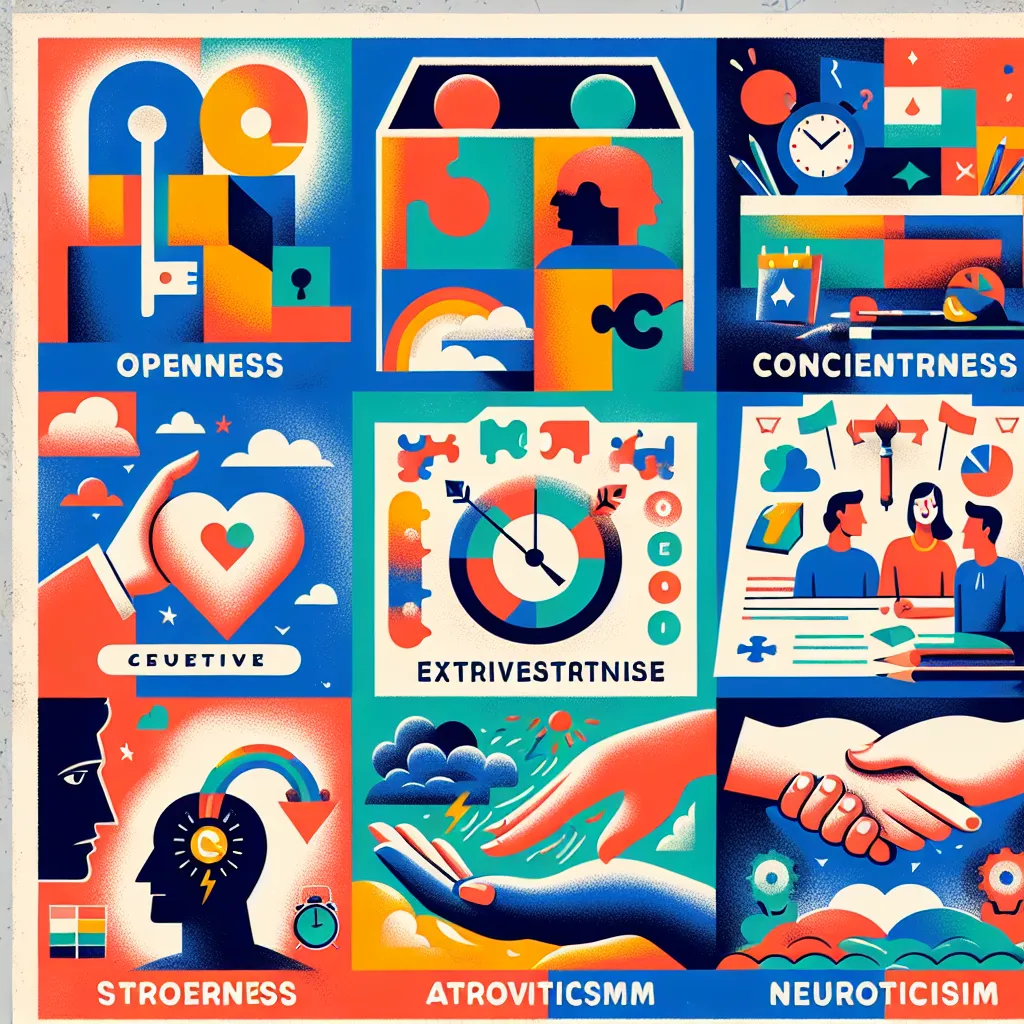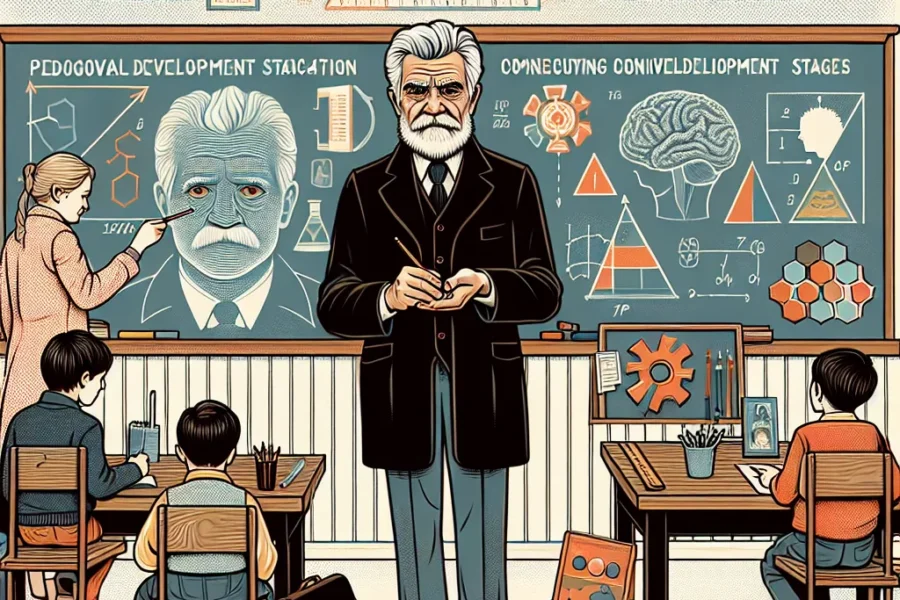Understanding the human personality has been a quest for psychologists and researchers for decades. Among the many models developed to explain the intricacies of our characters, the Big Five personality traits stand out as the most widely accepted and utilized framework in psychology. Also known as the Five-Factor Model, the Big Five are composed of openness, conscientiousness, extraversion, agreeableness, and neuroticism – often remembered by the acronym OCEAN. This comprehensive guide will delve into each trait, providing insights into how they influence our behavior, relationships, and life choices.
Openness
Openness to Experience is the first of the Big Five traits and it signifies a proclivity for creativity, novelty, and variety. Individuals who score high in openness are often imaginative, curious about the world, and open to trying new things. They have a broad range of interests and are likely to pursue activities that involve abstract thinking and artistic expression. On the other hand, those with low openness may prefer routine, have more conventional interests, and tend to be more grounded in their thinking.
Understanding openness can be beneficial in various aspects of life. In the workplace, for example, open individuals are valuable in roles that require innovation and problem-solving. In personal relationships, they might seek partners who share their thirst for adventure and exploration. Cultivating openness can also have a positive impact on personal growth and cognitive flexibility.
Conscientiousness
Conscientiousness reflects a person’s level of self-discipline, organization, and the desire for achievement. Highly conscientious individuals are often methodical, reliable, and work diligently towards their goals. They are good at managing their time and responsibilities effectively. Conversely, those with low conscientiousness might struggle with punctuality, orderliness, and often prefer spontaneous over planned actions.
This trait is particularly predictive of success in academic and professional environments. Conscientious people are likely to excel in their careers and maintain a stable and orderly lifestyle. Understanding this trait can help individuals create strategies for improvement in areas such as time management and attention to detail, which are critical in achieving long-term objectives.
Extraversion
Extraversion, one of the most discussed traits, is characterized by sociability, assertiveness, and a tendency to seek stimulation in the company of others. Extraverts are often perceived as outgoing, energetic, and positive. They enjoy engaging in social activities and draw energy from being around people. Introverts, the opposite of extraverts, may prefer solitude, need less stimulation from the external world, and often enjoy deep, one-on-one interactions.
Extraversion has significant implications for both personal and professional life. Extraverted individuals may find themselves drawn to careers in sales, marketing, or any field that requires constant interaction with people. Understanding where one falls on the extraversion scale can help individuals seek out environments and communities that complement their energy levels and social needs.
Agreeableness
Agreeableness encompasses attributes such as altruism, compassion, and a general concern for the well-being of others. People who score high in agreeableness are typically cooperative, empathetic, and have an optimistic view of human nature. Those with lower scores might be more competitive, less cooperative, and sometimes more skeptical of others.
The trait of agreeableness plays a crucial role in the formation and maintenance of social relationships. Highly agreeable individuals often have strong networks of friends and are well-liked by their peers. They may excel in roles that require teamwork and negotiation skills. Recognizing one’s level of agreeableness can guide personal and professional interactions, ensuring that relationships are nurtured in a way that respects individual predispositions towards cooperation or competition.
Neuroticism
Finally, neuroticism is a trait that refers to a person’s tendency to experience negative emotions such as anxiety, anger, or depression. Those with high levels of neuroticism are more susceptible to stress and may have difficulty coping with challenges. In contrast, individuals with low neuroticism are typically calm, emotionally stable, and resilient to stress.
Neuroticism can have profound effects on mental health and overall quality of life. High scorers may benefit from strategies to manage stress and improve emotional regulation, such as mindfulness, therapy, or regular exercise. Being aware of one’s propensity for negative emotions allows for proactive steps in building a supportive and emotionally healthy environment.
The Big Five in Practice
The Big Five personality traits provide a robust framework for personal development, psychological assessment, and interpersonal understanding. They offer a scientific basis for the examination of individual differences and can guide the way we approach life choices, career paths, and relationships.
For instance, knowing your own Big Five profile can help you tailor your career to suit your personality. Open and extraverted individuals may thrive in creative and dynamic fields, while conscientious and less open individuals might prefer structured and detail-oriented roles. Agreeableness can inform one’s approach to conflict resolution, and understanding neuroticism can catalyze the pursuit of personal coping mechanisms.
Assessing the Big Five traits isn’t solely for individual gain, but it can also improve organizational dynamics. Employers increasingly use personality assessments based on the Big Five to place employees in roles that suit their natural tendencies, thereby enhancing job satisfaction and productivity. Additionally, understanding the personalities of team members can foster better collaboration and workplace harmony.
Personality development is not static, and traits can indeed change over time with conscious effort and life experiences. Engaging in personal growth activities, whether through education, travel, or therapy, can influence one’s Big Five traits. For example, seeking new experiences can boost openness, while practicing mindfulness can decrease neuroticism.
In relationships, knowing your own and your partner’s Big Five traits can offer a roadmap for navigating differences. If one partner is high in extraversion and the other in introversion, understanding and respecting these traits can lead to a more harmonious relationship. Agreeableness can signal the degree of compromise one is willing to make, and awareness of neuroticism can foster empathy and support during difficult times.
Conclusion
The Big Five personality traits model is a comprehensive guide to understanding human behavior and personality. It not only helps individuals gain insight into their own character but also allows for better comprehension of others. As a highly researched and scientifically validated theory, the Big Five framework stands as a cornerstone in the field of psychology.
In a world that values self-awareness and personal development, the Big Five traits offer a structured approach to discovering and leveraging our unique personalities. Whether it’s pursuing a career that aligns with our traits, improving our relationships, or working towards greater emotional well-being, the Big Five can be a valuable tool in navigating the complexities of life. By embracing the insights provided by this model, we can take intentional steps towards personal fulfillment and success.



Leave a Comment